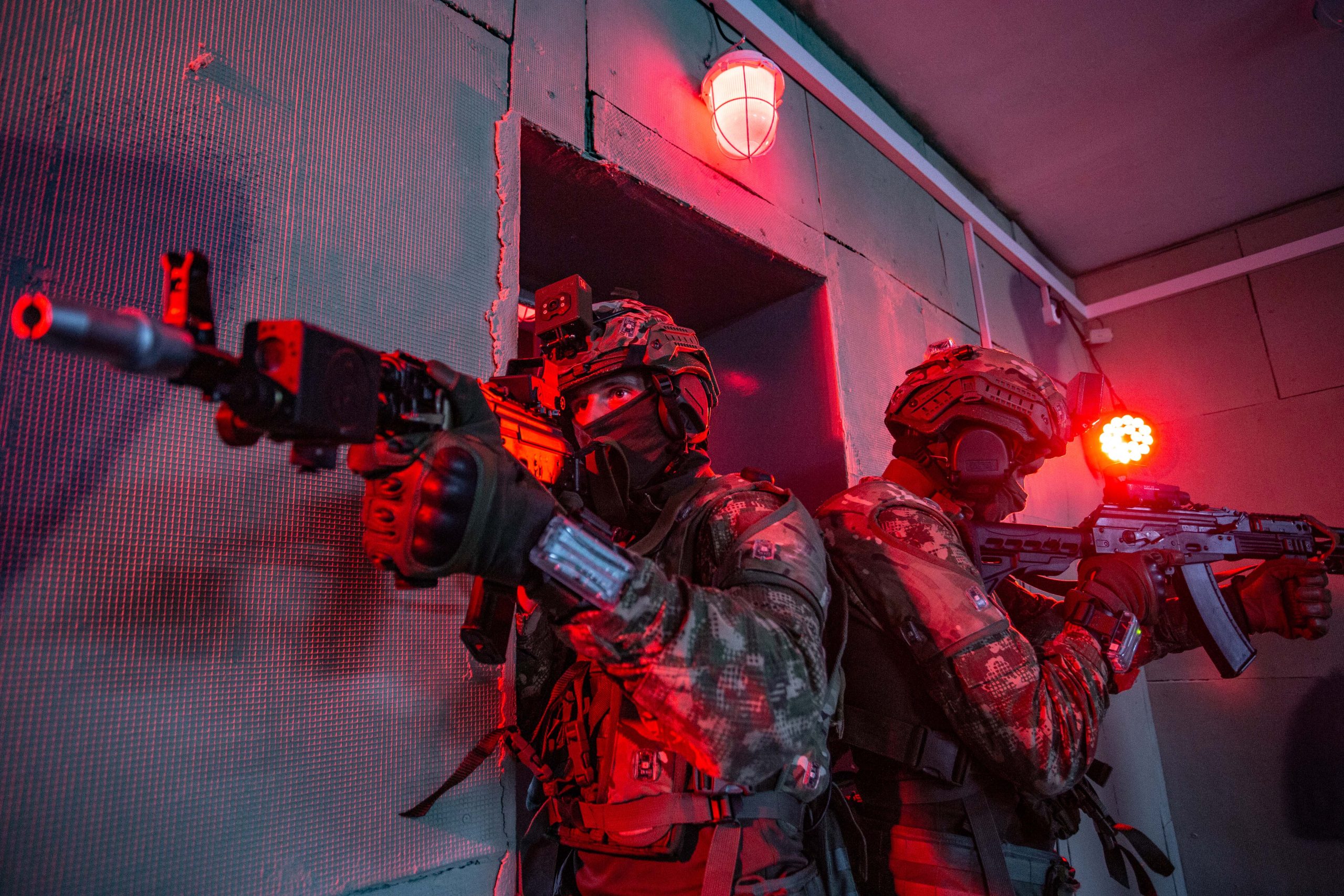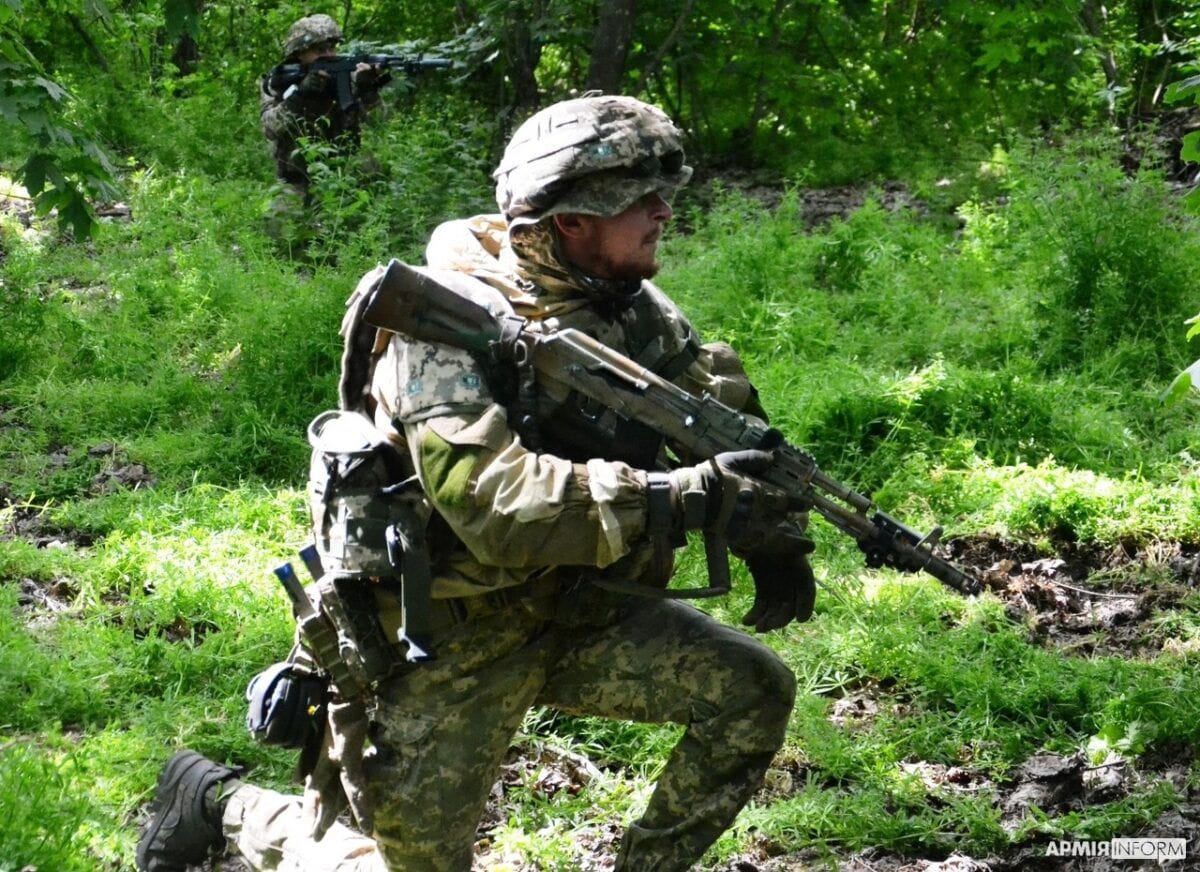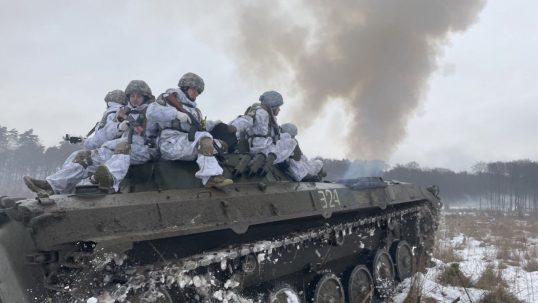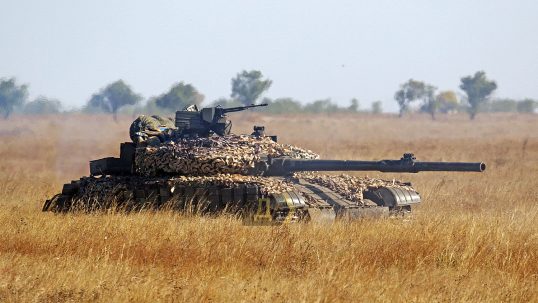Tactical training is a key element in the preparation of military personnel, law enforcement, and other security forces. The choice between indoor or outdoor exercises can impact the effectiveness of training and its outcomes. Let’s explore the main advantages and disadvantages of each environment, considering factors such as realism, safety, and environmental challenges.
Indoor tactical training: advantages and disadvantages

Indoor tactical training is an effective tool for developing both basic and specialized skills, allowing military and security forces to prepare for various combat scenarios in safe and controlled conditions.
For example, the training complex “Shoothouse,” launched in the spring of 2021 by SKIFTECH as part of a European project, helps prepare not only special forces but also assault units for combat operations in urban areas.
Advantages of indoor tactical training
Controlled environment: The main advantage of indoor training is the ability to create controlled conditions. Instructors can precisely regulate lighting, temperature, noise, and other elements, enabling the development of specific skills. Military personnel can conduct operations in:
- buildings;
- narrow corridors;
- low-visibility conditions.
Convenience and safety: Indoor environments provide safer conditions for training, which is especially important during the initial stages of preparation.
Stationary simulators for indoor training can be set up in classrooms or regular rooms, simplifying the organization of exercises. They are also available regardless of weather, time of day, or other external factors, allowing for training at any time.
Read more: Debunking myths about tactical training.
Disadvantages of indoor tactical training
Simulators used indoors can model real threats but with certain limitations.
Limited realism: Indoor training cannot fully replicate real combat conditions. The absence of variable factors, such as weather conditions (rain, snow, heat), natural obstacles (gorges, rocky areas, bodies of water, or elevation changes), and unpredictable situations, may result in personnel being less prepared for real operations in outdoor environments.
Monotony of training: Indoor training can become monotonous if conducted under standard conditions without variation. This can reduce motivation and interest in learning, which in turn affects the effectiveness of training.
Read more: The role of tactical simulators in modern military training.
Outdoor tactical training: advantages and disadvantages

Outdoor tactical training is essential for military and security forces that must be ready to act in real conditions. However, to achieve maximum training efficiency, it is important to consider both the advantages and disadvantages of this type of preparation, as well as to maintain a balance between outdoor and indoor training.
Advantages of outdoor tactical training
Realism of conditions: In outdoor environments, military personnel face a variety of conditions that closely resemble combat. Natural obstacles, weather changes, and diverse terrain create unpredictable situations, helping to learn how to act in real conditions.
Increased stress resistance: Outdoor training develops stress resistance and adaptability to various conditions, such as tactical exercises with armored vehicles. This is crucial for preparation for operations where not everything can be predicted.
Disadvantages of outdoor tactical training
Risk of injury: Outdoor environments present a higher risk of injury due to uneven terrain, changing weather conditions, or natural obstacles. This can complicate training, especially for beginners.
Choosing between indoor and outdoor tactical training depends on the specific needs and goals of the unit. Indoor training provides a controlled, safe environment for the initial stages of preparation, while outdoor training offers realism and challenges necessary for skill improvement in complex conditions. The ideal approach is to combine both types of training, which will achieve the highest level of combat readiness.
Read more: Innovative solutions for team training.

